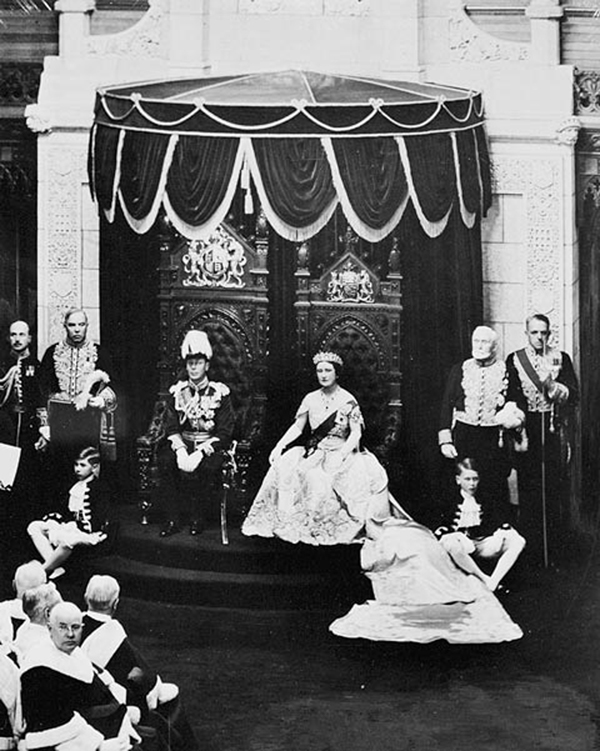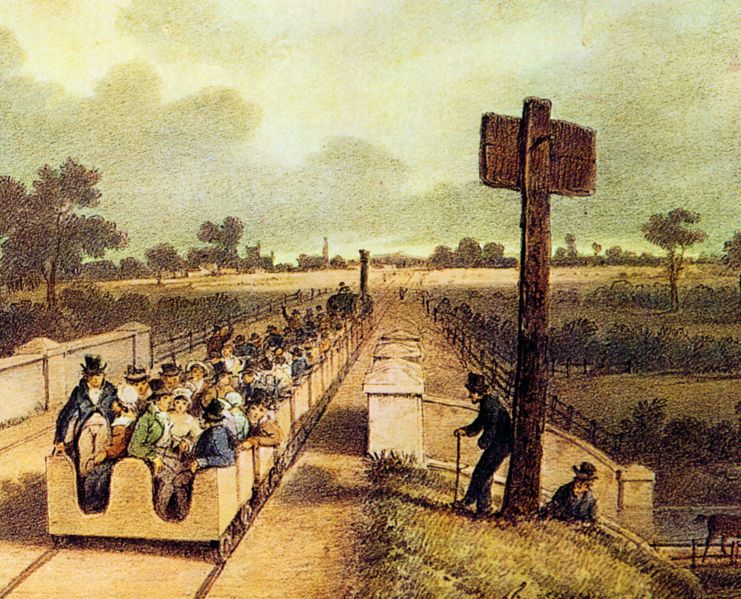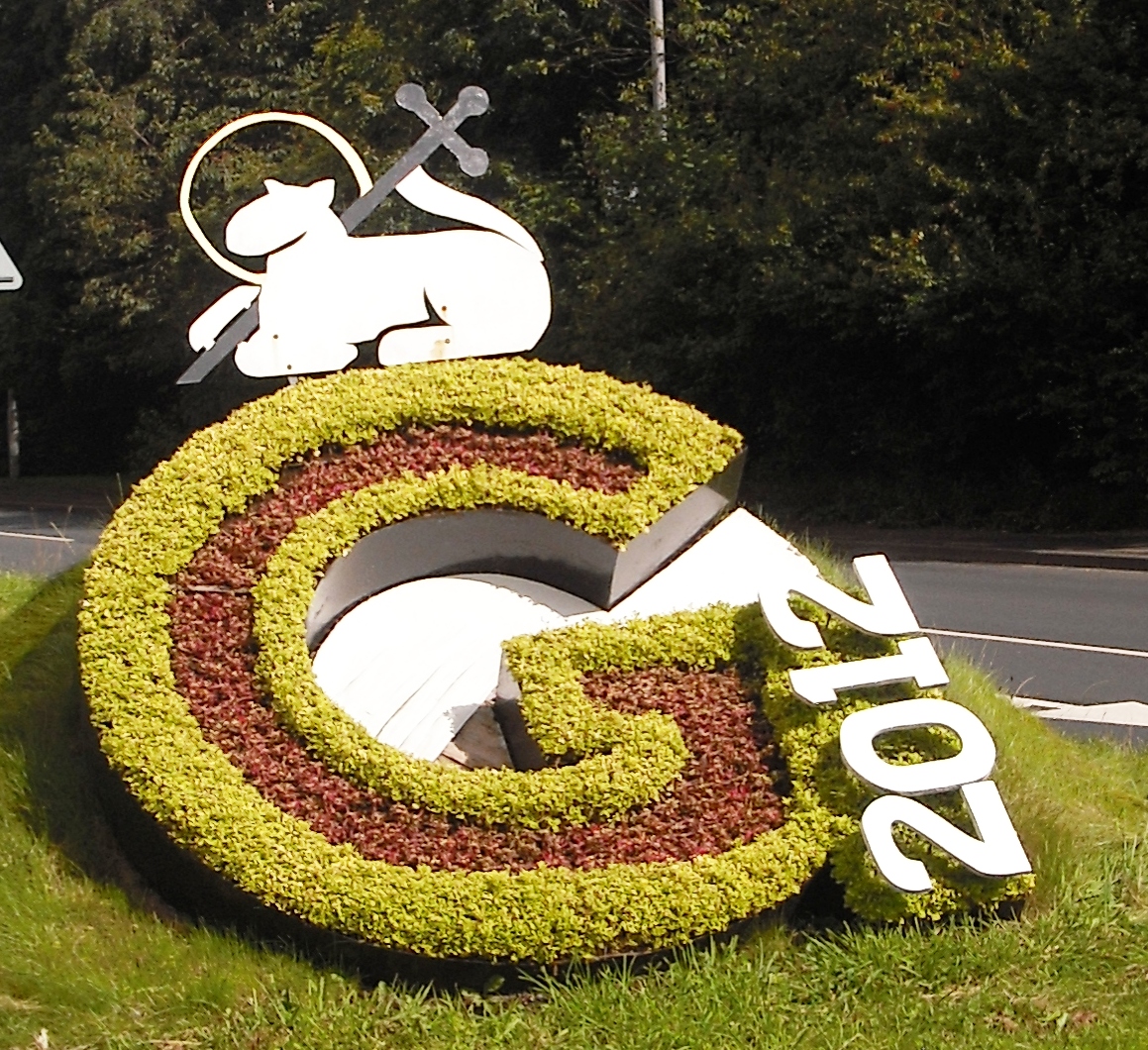|
Great Northern Railway (Great Britain)
The Great Northern Railway (GNR) was a British railway company incorporated in 1846 with the object of building a line from London to York. It quickly saw that seizing control of territory was key to development, and it acquired, or took leases of, many local railways, whether actually built or not. In so doing, it overextended itself financially. Nevertheless, it succeeded in reaching into the coalfields of Nottinghamshire, Derbyshire and Yorkshire, as well as establishing dominance in Lincolnshire and north London. Bringing coal south to London was dominant, but general agricultural business, and short- and long-distance passenger traffic, were important activities too. Its fast passenger express trains captured the public imagination, and its Chief Mechanical Engineer Nigel Gresley became a celebrity. Anglo-Scottish travel on the East Coast Main Line became commercially important; the GNR controlled the line from London to Doncaster and allied itself with the North Easte ... [...More Info...] [...Related Items...] OR: [Wikipedia] [Google] [Baidu] |
GNR Stirling 4-2-2
The Great Northern Railway (Great Britain), Great Northern Railway (GNR) No. 1 class Stirling Single is a class of steam locomotive designed for Express train, express passenger work. Designed by Patrick Stirling (railway engineer), Patrick Stirling, they are characterised by a single pair of large (8 ft 1 in) driving wheels which led to the nickname ''"eight-footer"''. Originally the locomotive was designed to haul up to 26 passenger carriages at an average speed of . They could reach speeds of up to 85 mph (137 km/h). Development On his arrival at GNR, Stirling set out to standardise the railway's rolling stock. He also borrowed a 'single-wheeler' from the Great Eastern Railway and, in 1868, designed two versions of a arrangement with driving wheels. The outcome in 1870 was a locomotive with driving wheels with outside cylinders, designed specifically for high-speed expresses between York and London. The British norm at the time were inside cylinders. Ho ... [...More Info...] [...Related Items...] OR: [Wikipedia] [Google] [Baidu] |
East London
East London is the part of London, England, east of the ancient City of London and north of the River Thames as it begins to widen. East London developed as London Docklands, London's docklands and the primary industrial centre. The expansion of railways in the 19th century encouraged the eastward expansion of the East End of London and a proliferation of new suburbs. The industrial lands of East London are today an area of regeneration, which are well advanced in places such as Canary Wharf and ongoing elsewhere. History Toponymy The etymology of London is uncertain, but is known to be an ancient name. The concept of East London as a distinct area is a relatively recent innovation. John Strype's map of 1720 describes London as consisting of four parts: The City of London, City and Liberty of Westminster, Westminster, Southwark and That Part Beyond the Tower. From the late 19th century the term East End of London was used to describe areas immediately adjacent to the City in t ... [...More Info...] [...Related Items...] OR: [Wikipedia] [Google] [Baidu] |
Royal Assent
Royal assent is the method by which a monarch formally approves an act of the legislature, either directly or through an official acting on the monarch's behalf. In some jurisdictions, royal assent is equivalent to promulgation, while in others that is a separate step. Under a modern constitutional monarchy, royal assent is considered little more than a formality. Even in nations such as the United Kingdom, Norway, the Netherlands, Liechtenstein and Monaco which still, in theory, permit their monarch to withhold assent to laws, the monarch almost never does so, except in a dire political emergency or on advice of government. While the power to veto by withholding royal assent was once exercised often by European monarchs, such an occurrence has been very rare since the eighteenth century. Royal assent is typically associated with elaborate ceremony. In the United Kingdom the Sovereign may appear personally in the House of Lords or may appoint Lords Commissioners, who anno ... [...More Info...] [...Related Items...] OR: [Wikipedia] [Google] [Baidu] |
9 & 10 Vict
9 (nine) is the natural number following and preceding . Evolution of the Hindu–Arabic digit Circa 300 BC, as part of the Brahmi numerals, various Indians wrote a digit 9 similar in shape to the modern closing question mark without the bottom dot. The Kshatrapa, Andhra and Gupta started curving the bottom vertical line coming up with a -look-alike. How the numbers got to their Gupta form is open to considerable debate. The Nagari continued the bottom stroke to make a circle and enclose the 3-look-alike, in much the same way that the sign @ encircles a lowercase ''a''. As time went on, the enclosing circle became bigger and its line continued beyond the circle downwards, as the 3-look-alike became smaller. Soon, all that was left of the 3-look-alike was a squiggle. The Arabs simply connected that squiggle to the downward stroke at the middle and subsequent European change was purely cosmetic. While the shape of the glyph for the digit 9 has an ascender in most modern typ ... [...More Info...] [...Related Items...] OR: [Wikipedia] [Google] [Baidu] |
Board Of Trade
The Board of Trade is a British government body concerned with commerce and industry, currently within the Department for Business and Trade. Its full title is The Lords of the Committee of the Privy Council appointed for the consideration of all matters relating to Trade and Foreign Plantations, but is commonly known as the Board of Trade, and formerly known as the Lords of Trade and Plantations or Lords of Trade, and it has been a committee of the Privy Council of the United Kingdom. The board has gone through several evolutions, beginning with extensive involvement in colonial matters in the 17th century, to powerful regulatory functions in the Victorian Era and early 20th century. It was virtually dormant in the last third of the 20th century. In 2017, it was revitalised as an advisory board headed by the International Trade Secretary who has nominally held the title of President of the Board of Trade, and who at present is the only privy counsellor of the board, the othe ... [...More Info...] [...Related Items...] OR: [Wikipedia] [Google] [Baidu] |
George Hudson
George Hudson (probably 10 March 1800 – 14 December 1871) was an English railway financier and politician who, because he controlled a significant part of the Railway Mania, railway network in the 1840s, became known as "The Railway King"—a title conferred on him by Sydney Smith in 1844. Hudson played a significant role in linking London to Edinburgh by rail, carrying out the first major merging of railway companies (the Midland Railway) and developing his home city of York into a major railway junction. He also represented Sunderland (UK Parliament constituency), Sunderland in the House of Commons of the United Kingdom, House of Commons. Hudson's success was built on dubious financial practices and he frequently paid shareholders out of capital rather than money the company had earned. Eventually in 1849, a series of enquiries, launched by the railways he was chairman of, exposed his methods, although many leading the enquiries had benefited from and approved of Hudson's m ... [...More Info...] [...Related Items...] OR: [Wikipedia] [Google] [Baidu] |
Railway Mania
Railway Mania was a stock market bubble in the rail transportation industry of the United Kingdom of Great Britain and Ireland in the 1840s. It followed a common pattern: as the price of railway shares increased, speculators invested more money, which further increased the price of railway shares, until the share price collapsed. The mania reached its zenith in 1846, when 263 Acts of Parliament for setting up new railway companies were passed, with the proposed routes totalling . About a third of the railways authorised were never built—the companies either collapsed because of poor financial planning, were bought out by larger competitors before they could build their line, or turned out to be fraudulent enterprises to channel investors' money into other businesses. Causes The world's first recognizably modern inter-city railway, the Liverpool and Manchester Railway (the L&M), opened in 1830 and proved to be successful for transporting both passengers and freight. In t ... [...More Info...] [...Related Items...] OR: [Wikipedia] [Google] [Baidu] |
Ardrossan
Ardrossan (; ) is a town on the North Ayrshire coast in southwestern Scotland. The town has a population of 10,670 and forms part of a conurbation with Saltcoats and Stevenston known as the 'Three Towns#Scotland, Three Towns'. Ardrossan is located on the east shore of the Firth of Clyde. The town is the main terminal of Caledonian MacBrayne ferry services operating from mainland Scotland to the Isle of Arran. History Ardrossan's roots can be traced to the construction of its Ardrossan Castle, castle 'Cannon Hill', thought to be in around 1140, by Simon de Morville. The castle and estate passed to the Clan Barclay, Barclay family (also known as Craig (surname), Craig) and through successive heirs until the 14th century when it passed to the Eglinton family on the death of Godfrey Barclay de Ardrossan, who died without an heir. Sir Fergus Barclay, Baron Ardrossan, Baron of Ardrossan, was said to be in league with the Devil and in one of his dealings, set the task for the Devil ... [...More Info...] [...Related Items...] OR: [Wikipedia] [Google] [Baidu] |
Fleetwood
Fleetwood is a coastal town in the Borough of Wyre in Lancashire, England, at the northwest corner of the Fylde. It had a population of 25,939 at the 2011 United Kingdom census, 2011 census. Fleetwood acquired its modern character in the 1830s, when the principal landowner Peter Hesketh-Fleetwood, High Sheriff and MP, conceived an ambitious plan to re-develop the town to make it a busy seaport and railway spur. He commissioned the Victorian architect Decimus Burton to design a number of substantial civic buildings, including two lighthouses. Hesketh-Fleetwood's transport terminus schemes failed to materialise. The town expanded greatly in the first half of the 20th century with the growth of the fishing industry, and passenger ferries to the Isle of Man, to become a Fishing trawler, deep-sea fishing port. Decline of the fishing industry began in the 1960s, hastened by the Cod Wars with Iceland, though fish processing is still a major economic activity in Fleetwood. The town's ... [...More Info...] [...Related Items...] OR: [Wikipedia] [Google] [Baidu] |
Preston, Lancashire
Preston () is a city on the north bank of the River Ribble in Lancashire, England. The city is the administrative centre of the county of Lancashire and the wider City of Preston, Lancashire, City of Preston local government district. Preston and its surrounding district obtained City status in the United Kingdom, city status in 2002, becoming England's 50th city in the 50th year of Elizabeth II of the United Kingdom, Queen Elizabeth II's reign. Preston had a population of 147,800 at the 2021 census, the City of Preston district 156,411 in 2023 and the Preston Built-up Area 313,322. The Preston Travel To Work Area, in 2011, had a population of 420,661, compared with 354,000 in the previous census. The south bank of the Ribble is part of the Preston urban area, although it forms the South Ribble borough that is administratively separate. Preston and its surrounding area have provided evidence of ancient Roman Britain, Roman activity, largely in the form of a Roman road that led ... [...More Info...] [...Related Items...] OR: [Wikipedia] [Google] [Baidu] |
North Union Railway
The North Union Railway was an early British railway company, operating two main routes, from to and from to , all in Lancashire. The northerly part of the routes sharing the line from Euxton to Preston. The company was created in 1834 with the first parliamentary authorised railway amalgamation. The two companies amalgamated were the Wigan Branch Railway (WBR) and the Preston and Wigan Railway (P&WR). In 1844 the company acquired the Bolton and Preston Railway (B&PR). The company operated independently until 1846, then under joint lease of London and North Western Railway (L&NWR) and Lancashire and Yorkshire Railway (L&Y) but continuing as an independent company until 1889. In 1889 it was absorbed by the lessees with the line from Parkside to Euxton going to the L&NWR and the line from Euxton to Bolton (the former B&PR) being taken by the (L&Y). The section from Euxton to becoming jointly owned. Most of the line eventually became part of the West Coast Main Line (WCM ... [...More Info...] [...Related Items...] OR: [Wikipedia] [Google] [Baidu] |
Grand Junction Railway
The Grand Junction Railway (GJR) was an early railway company in the United Kingdom, which existed between 1833 and 1846. The line built by the company, which opened in 1837, linked the Liverpool and Manchester Railway to Birmingham via Warrington, Crewe, Stafford and Wolverhampton. This was the first trunk railway to be completed in England, and arguably the world's first long-distance railway with steam traction. It terminated at Birmingham Curzon Street railway station (1838–1966), Curzon Street Station in Birmingham, which it shared with the London and Birmingham Railway (L&BR), whose adjacent platforms gave an interchange with full connectivity (with through carriages) between Liverpool, Manchester and London. The company merged with its business partners in 1846 to form the London and North Western Railway (LNWR). The lines which comprised the GJR now form the central section of the West Coast Main Line. History The Grand Junction Railway Company was established in ... [...More Info...] [...Related Items...] OR: [Wikipedia] [Google] [Baidu] |







